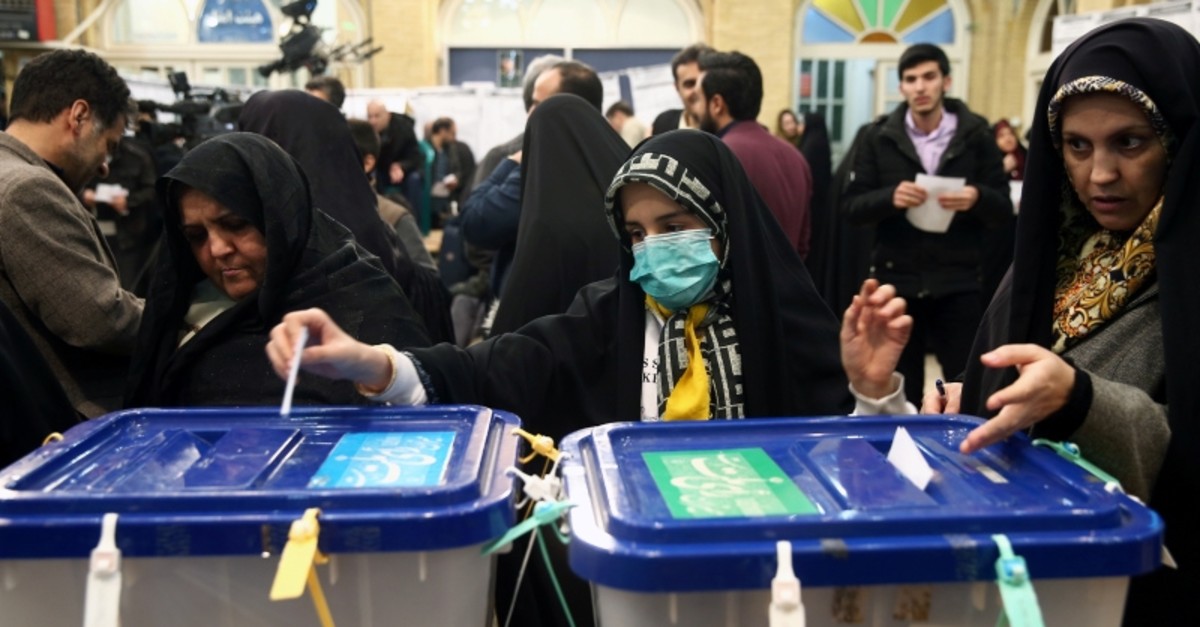Iran’s conservatives claimed victory Sunday in a general election marked by the lowest turnout since the 1979 Islamic Revolution amid public anger against the government, an economic downturn and the disqualification of half the candidates.
A conservative resurgence would heap pressure on beleaguered President Hassan Rouhani and signal a shift from four years ago when reformists and moderates won a slender majority in parliament.
The Interior Ministry announced results of 95% of the 208 constituencies in Friday’s election, declaring the names of the winning candidates but without specifying their political affiliation.
“Victory for the anti-American candidates, a new slap for Trump,” crowed the ultra-conservative Kayhan newspaper.
“The people have disqualified the reformists,” it added, alluding to Rouhani’s backers, who have been weakened by President Donald Trump pulling the US out of a landmark nuclear deal and by a slew of economic and political crises.
Seventeen women were elected, the website of the government newspaper Iran said – the same number as in the outgoing 290-seat parliament.
Interior Minister Abdolreza Rahmani Fazli announced the participation rate was 42.6% – the lowest in four decades.
The election came two days after Iran announced its first cases of the deadly new coronavirus that emerged in China.
“We held these elections when there were various incidents in the country: we had bad weather, there was this coronavirus disease, there was the plane crash,” Rahmani Fazli said, referring to the Jan. 3 downing of a Ukrainian airliner which killed 176 people.
He said that in such a scenario “the turnout rate seems perfectly acceptable for us.”
Low participation had been widely forecast, as a conservative-dominated electoral watchdog disqualified about half of the 16,000-odd candidates, mostly moderates and reformists.
The Fars news agency said a second round would be held in at least 11 constituencies. One woman candidate has qualified for the second round, Iran newspaper added.
‘Negative propaganda’
Voter apathy marked the polls, but Iran’s supreme leader Ayatollah Ali Khamenei lauded the people’s “huge participation” despite what he termed “negative propaganda” by foreign media.
It “began a few months ago and grew larger approaching the election and in the past two days, under the pretext of this illness,” he said.
“Their media did not miss the slightest opportunity to discourage people from voting. (Our enemies) are even opposed to any election by the Iranian people,” the leader added.
Iran on Sunday reported three new coronavirus deaths, taking its toll to eight – the highest in any country outside China. It said there were 43 COVID-19 virus infections nationwide.
Authorities ordered the closure of schools, universities and other educational centers in 14 of Iran’s 31 provinces from Sunday and said Tehran could be under quarantine, if necessary.
Art events, concerts and film shows have been banned for a week across the country.
In the past 24 hours, four new infections surfaced in Tehran, seven in the holy city of Qom – where the country’s first infections emerged – two in Gilan and one each in Markazi and Tonekabon, health ministry spokesman Kianoush Jahanpour said.
“We are on the frontlines, we need help,” said the head of Qom’s medical sciences university, Mohammadreza Ghadir.
“If I can say one thing, it helps Qom.”
Free treatment
Iran’s health minister, Saeed Namaki, said the treatment of COVID-19 cases would be free.
“In every city, one hospital will be dedicated to treating coronavirus cases,” he said, adding that this number would be greater in bigger cities like the capital.
Tehran’s city hall has ordered the closure of snack shops and water fountains in metro stations, officials said.
Tehran municipality spokesman Gholamreza Mohammadi said buses and underground trains were being disinfected.
Mohsen Hashemi, head of Tehran’s municipal council, said, “If the number of infections increases in Tehran, the whole city will be quarantined.”










Discussion about this post